Daniel Coyle's Blog, page 14
September 25, 2012
How to be More Creative
This is the single best speech on creativity I’ve ever seen. It’s from Jack White, rock star and former upholsterer. I love this because it shows that creative work is not about magic and mystery. It’s about designing an environment that helps you make new connections in the brain you already have. (The whole clip is useful, but if you’re short on time, skip ahead to the 40-second mark.)
Here are the takeaways:
1) Inspiration is hugely overrated. Don’t wait for the clouds to part and rays from heaven to come down. Do the work, every day.
2) Scarcity is fuel. Luxuries of time and space don’t help creativity; they strangle it. Constrict your time and choices; it creates clarity.
3) Avoid comfort. Don’t settle into patterns, but seek ways to create tension
“Force yourself into it. Force yourself…. Deadlines and things make you creative. But opportunity and telling yourself, “Oh you have all that time in the world, all the money in the world, all the colors in your palette you want, anything you want…” – that just kills creativity.”
September 20, 2012
How to Begin a New Skill
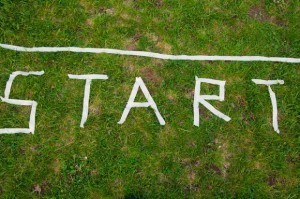 Of all the key moments in talent development, the most important and mysterious is the first ten seconds. The first few swings, the first notes, the first stumbly tries. It’s a tenuous time, because it’s a psychological fork in the road. Either you get the Good Feeling (“Hey, this is kinda fun!”), or the Bad Feeling (“Awww, I’ll never be any good”). In short, it’s either an on-ramp or a stop sign.
Of all the key moments in talent development, the most important and mysterious is the first ten seconds. The first few swings, the first notes, the first stumbly tries. It’s a tenuous time, because it’s a psychological fork in the road. Either you get the Good Feeling (“Hey, this is kinda fun!”), or the Bad Feeling (“Awww, I’ll never be any good”). In short, it’s either an on-ramp or a stop sign.
The deeper question here has to do with design. Namely, how do you create an environment that creates more on-ramps and avoids stop signs?
As it happens, I just came across some videos that do a nice job of teaching how to do just that. They feature Diddy, a two-year-old kid in Yorkshire, England. His father, a PE teacher named Stuart Owen, has videotaped his experiences coaching Diddy in number of sports. (And it’s working — the little dude is pretty amazing. Click here to check out the full set.)
While the videos are useful for parents, I think they also provide a nice blueprint for anybody who wants to start out on the right foot.
Takeaways:
1) Keep it small. Don’t be ambitious. Focus on one simple core action, not a whole complicated series of them.
2) Have a clearly defined, do-able target. Don’t aim vaguely or abstractly — this is about creating a small game, with clear feedback so the person can instantly see for themselves where they’re at — how they can get closer next time.
3) Make it fun. Create an environment free of judgement, and where successes are celebrated like crazy.
The payoff of this design is evident: you can see how much Diddy loves it. Not because he’s being praised (which is nice), but rather because he’s in an environment tilted to help him discover an immensely powerful fact: trying new skills, while it feels strange at first, isn’t that hard after all.
September 18, 2012
The Coach in Your Head: How to Get Better at Self-Talk
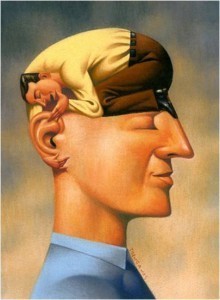 Self talk is the world’s most mysterious language. We all do it constantly — you know, that whisper that comes into your head at key moments, the one that says, okay, take a deep breath… keep your weight on the balls of your feet… now go! — but it happens mostly unconsciously, and nobody talks about it.
Self talk is the world’s most mysterious language. We all do it constantly — you know, that whisper that comes into your head at key moments, the one that says, okay, take a deep breath… keep your weight on the balls of your feet… now go! — but it happens mostly unconsciously, and nobody talks about it.
Which is strange, because when it comes to skills, self talk is a massively useful tool. For example, studies show that skilled athletes tend to self-talk more often, and in a more planned and consistent manner (less-skilled athletes tend merely to react). Sprinters who self-talk run faster. Good self talk functions like an early-warning radar system, helping us to identify key moves and navigate problems. Done well, it’s like having a coach inside your head.
But here’s the question: if self talk is a good thing, how do we get better at it? Is it possible to teach it, the same way you’d learn any language? With that in mind, here are a few tips — some from experiments, some from my observations.
1) Keep it short and chunky. Good self talk is never chatty or complicated. It divides the skill into its key moves, and uses those as clear cues. For example, with a golf swing:
Say this: “Smooth arms, still head.”
Not this: “Okay, let’s keep the takeaway smooth, relax your posture, make sure to keep your head still through the backswing.”
2) Make it vivid. The more vivid the image, the easier it is to remember, and to do. For example, with a violin player working on posture:
Say this: “Stand like a tree.”
Not this: “Make sure you stand up straight.”
3) Keep it positive. Don’t focus on what you want to avoid, but on what you want to accomplish. For example, for a soccer player practicing penalty kicks:
Say this: “Keep tempo; hit it clean.”
Not this: “Don’t rush the shot, don’t get under the ball.”
Finally, and maybe most usefully, fluent self-talkers don’t just talk to themselves during their performance; they also do it before and after. Self talk is like a game tape: you use it to preview what’s going to happen, and then afterwards you use it again to walk through what happened, and figure out how you might do it better the next time.
September 13, 2012
How to Coach Your Kid
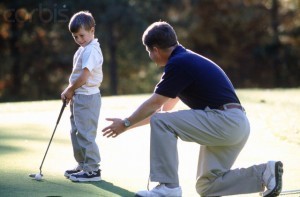 I recently got a letter from a reader named Mike Polonsky that shines a bright light on a persistent question a lot of us deal with: what’s the best way to coach your own kid?
I recently got a letter from a reader named Mike Polonsky that shines a bright light on a persistent question a lot of us deal with: what’s the best way to coach your own kid?
Because if we parents are honest, we know that we are, more often than not, pretty crummy coaches. We want to help, but we lack deep understanding of mechanics or technique, and so we compensate by being vague and/or bossy (been there). By the same token, kids who would listen eagerly to a coach aren’t always so agreeable to taking pointers from dear old Mom or Dad.
In short, it’s complicated.
Which is where Mike Polonsky and his nine-year-old hockey-playing son come in. Here’s what Mike wrote:
Dylan was working on his shot this summer, and it was coming along. More zip, more elevation. Like a basketball player in the driveway working on his shot, Dylan was pounding the hockey pucks into the goalie net, which had a target in each corner. While his speed was developing, his aim was not. For instance, he might be trying to hit the top left corner and end up in the bottom right quadrant. This type of result was happening routinely. Aim just seemed beyond his reach at this point in his development. Summer was winding down.
In mid-August, while he was in the middle of his bucket of pucks, I asked him to stop; put down his stick; take off his gloves; pick up a puck and throw it like a pitcher or a quarter back to the top left corner. He whipped it over the net. But with in 10 throws he was narrowing in, and within 20 throws he was consistently in the range.
I asked him while he kept throwing, “Dylan, can you feel your brain talking to your hand? Trying to figure out when to release the puck?” He said he could. After about 40 throws, I suggested he put the gloves back and grab his stick. I told him, “Dylan, that blade at the end of your stick, I don’t want you to think of it as a blade anymore. Think of it as another hand, that can grab a puck and is connected to your brain. Let them talk to each other, and control when you release the puck.”
First shot: top left corner. Dylan just looked over at me, and smiled with wonder and surprise. Pretty cool moment for us. Moreover, his aim improved dramatically thereafter. Once, two weeks later towards the end of the summer he nailed four pucks in a row into that same top left corner.
I love this story because of the simplicity of what Mike does — and doesn’t do.
What Mike does: he targets the problem — release point. He helps Dylan notice for himself. Then creates a simple action from which Dylan can learn, and gives him a vivid image to work from.
What Mike doesn’t do: take over. Give a lecture. Grab a stick to demonstrate the technique. Make it about himself in any way.
All of which goes toward showing us the real way to be a good coach/parent.
It’s not about explaining big things; it’s about directing the kid’s attention to little things.
It’s not about talk. It’s about asking questions, inspiring action, and creating vivid feedback so they can figure it out.
It’s not about you, parents — it’s about them.
Me? I wanna be like Mike.
September 11, 2012
How to Be Ready for the Big Test
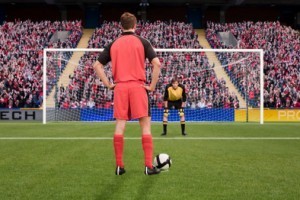 Life is made up of tests: the championship game, the final exam, the crucial presentation, the big recital. In those moments, we naturally tend to focus on the externals of our performance. Were we successful or not?
Life is made up of tests: the championship game, the final exam, the crucial presentation, the big recital. In those moments, we naturally tend to focus on the externals of our performance. Were we successful or not?
However, I think it might be more revealing to focus on the foundation: the days of preparation leading up to the performance. Specifically on this question: how do you know when you’re ready for a big test? How do you tell that you’re fully prepared?
While doing research for The Little Book of Talent I was fortunate enough to spend time at a Navy SEALs training base. The SEALs are rightly famous for their toughness, but I was more impressed with their brains — especially when it came to their methods for preparing for big tests. Case in point: last year’s mission to take out Osama Bin Laden, featured in the new book No Easy Day.
So how did the SEALs prepare for this test? They built a precise, full-scale mockup of Bin Laden’s compound in North Carolina, and they rehearsed. And rehearsed. And rehearsed. For several weeks, they ran endless variations of possible situations, from best-case scenarios on down to total disaster. The story is told in No Easy Day, the new book by fellow Alaskan Mark Bissonnette.
“Every single contingency was practiced to the point where we were tired of it,” Bissonnette writes.
I love that line, not just because it resonates with what I observed with the SEALs, but also because it gives us some insight into what real preparation for big tests truly is. You do something over and over – every single contingency – until you are tired of it.
This is not normally how we think about preparation. In normal life, we think that practice ends when we get it right a couple times in a row. But in truth, that’s when practice truly begins. The goal is not to do it right once. The goal is to do it often enough, in realistic conditions and under pressure, so that you can’t do it wrong.
So how do you know when you’re there? Here are a few tells.
1) You can perform the action while paying attention to other, extraneous things. For instance, if it’s a speech or a song, you can perform it while retaining a bit of brain space for noticing things. Call it automaticity, call it autopilot — the point is that you’ve built a reflex.
2) You are genuinely, deeply tired of it. You know every molecule of the material so well that if you ran through it one more time you might explode. This relationship — call it a healthy exasperation — is a good sign that you’ve mastered it.
3) You can vividly and accurately pre-create the Big Moment in your imagination — the sights, the sounds, the smells, the sensations. You don’t get surprised or knocked off balance by the big test because in a profound way, you’ve already experienced it.
All of which adds up to a basic truth known to the SEALs and others whose job is built on mastery: the trick of succeeding in the biggest moments is to use practice to transform them into a series of small, controllable moments.
August 31, 2012
The Secret Race
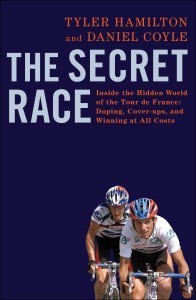 I’m excited to tell you that I’ve got a new book coming out next Wednesday, September 5.
I’m excited to tell you that I’ve got a new book coming out next Wednesday, September 5.
It’s called The Secret Race, written with professional bike racer and former Olympic gold medalist Tyler Hamilton. It’s the full, honest story of his career at the top of the world’s toughest sport; it takes you inside the hidden world of the U.S. Postal team and the Tour de France during the Lance Armstrong era.
Here’s what went into it: Two years of research. Two hundred hours of interviews with Hamilton. My independent verification of Hamilton’s account through numerous interviews with other riders, doctors, team assistants, wives, and friends. One weeklong trip to France, Spain, and Monaco to visit key locations.
It appears the book is already making news. If you want to read more, check out thesecretrace.com, or join the conversation at TSR’s facebook page. If you want to pre-order, click here
There’s a lot more to come.
I’m eager to hear what you think of it.
August 23, 2012
New Video of Coaching Tip #42: Avoid Giving Long Speeches
Not sure about the eligibility rules for Academy Awards, but do you think I’ve got a shot?
August 21, 2012
LBOT: The Big Interview
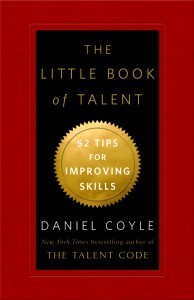 With the new book arriving in stores today, I thought I’d mark the occasion in the traditional way: by doing an author Q&A, like you see on Jon Stewart or Piers Morgan. In this case, however, I’ve decided to do the interview with the savviest questioners I know: my four kids, ages 10-17.
With the new book arriving in stores today, I thought I’d mark the occasion in the traditional way: by doing an author Q&A, like you see on Jon Stewart or Piers Morgan. In this case, however, I’ve decided to do the interview with the savviest questioners I know: my four kids, ages 10-17.
Not to say that LBOT is a book designed just for kids; it’s for everybody who’s interested in improving their skills, ages 10-100. But it’s clear that kids, particularly these ones, have a way of looking into the heart of things. Even if they are a bunch of smart alecks.
Without further ado, here’s a partial transcript:
Q: So seriously — which one of us is your favorite?
A: Whoever asks the best questions. So far, that’s the winner.
Q: Why did you decide to write a little book of talent? Why not a medium book of talent? Why not a super-long book of talent?
A: The Talent Code is about looking inside talent hotbeds and seeing what makes them tick.
This book takes that idea and flips it on its head. The idea is to take the lessons of the talent hotbeds and to boil them down into a set of simple tips. Do this, not that. And the best way to do that wasn’t to write a medium or a long book. So, a little book. A manual.
Plus, what I liked best about writing Talent Code was the way it put me in touch with lots of fascinating people who were putting these ideas to work. To me, that’s the most fun thing about writing books — the conversations that it creates. So I guess this is my sneaky way of doing that again.
Q: Where did the tips come from?
I’ve been collecting them for five years now. It started when I was at this tennis club called Spartak in Moscow, and the players were practicing in slow-motion — swinging forehands and backhands super-precisely — and I thought — hey, I should use that method for teaching my Little League baseball players how to hit. And I did. And it worked really, really well.
From that moment I started collecting tips, especially after the first book was published. Tips from the Navy SEALs, the U.S. Olympic coaches, top music academies, businesses, schools, pro sports teams, from scientists who study learning. I kept collecting, and pretty soon the list was getting longer and longer. It needed to be collected in one place, and LBOT is that place.
Q: Did you use us as guinea pigs?
A: Yep. When you learn about this stuff — when you see it work — you can’t help but get kinda infected by some of these ideas. So yes, your mom and I did use a lot of these tips in our daily life. When we tell you to break everything down into small chunks, or that struggle is a good thing — that’s all from the research for the book.
Q: Are there other books like this?
A: Not really. Most books about skill focus on certain narrow types of skill. LBOT is broader, because its built on the idea that all skills — athletic, musical, business, parenting — are really about growing your brain, about struggling in certain ways so that the wires of your brain get faster and more accurate.
One of the inspirations was Food Rules, by Michael Pollan; another was Elements of Style, the writing manual by Strunk and White. And if you think about it, developing skill is a lot like developing good eating habits or good writing habits. A few simple rules can take you a long way. Like when your mom tells you not to eat junk food.
Q: Why is there a gold medal on the front of the book?
A: I suppose because there was one on the front of The Talent Code. It shows the books are like siblings. Happy, friendly, golden siblings, who always get along. Exactly like you guys.
Q: Why are there 52 tips? Why not 152?
A: It was a Goldilocks decision, feeling our way along. We started with the goal of true simplicity: having each tip fit on one page. At one point there were 75 tips — that felt like too many, and some of them overlapped each other. In the end there were 53. I decided to make it 52, since there are 52 weeks in a year, 52 cards in a deck.
Q: What was the 53rd tip, the one that got cut?
A: It was about relationships — and about how important it is to build the skill for building and maintaining good relationships, since in the end that’s the most important thing.
Q: Which tip do you think is the most useful?
A: I’m partial to tip #43: Embrace Repetition. Because most of us have an instinctive allergy to repetition. We see it as a drag, as something to be avoided. But in fact, that’s a huge misperception. Repetition the greatest tool in our toolbox, because it’s the most effective way to make our brains fast and accurate. Like Bruce Lee said, “I fear not the man who has practiced ten thousand kicks once, but I fear the man who has practiced one kick ten thousand times.” And we all know that Bruce Lee is one cool dude.
Q: Which tip is your favorite?
A: I really like Tip #5: Be Willing to Be Stupid, because it’s helped me take better risks — like with writing this blog with you guys. I also like Tip #30: Take a Nap.
Q: Do people ask about your toupee?
A: Again, I’m going to have to go with no comment. Also: that joke will never get old.
Q: Or is it a joke?
A: I suppose now we’ll never know.
July 26, 2012
LBOT Trailer #1
Here’s the first trailer for The Little Book of Talent, which is due out on August 21.
A few behind-the scenes-notes:
1) My office is not normally that clean.
2) We futzed a lot with the music. The early version had more of a mysterious, pingy soundtrack that sounded like something from a mystery movie. Looking for something a bit warmer sounding, we changed it to this one. My brother Maurice says it sounds like I should be hosting an organic gardening show on NPR.
3) Big thanks to videographer George Overpeck, Dave Stevenson, Ruby Levesque, Quinne Rogers, and my wife Jen for putting this together.
What do you think?
July 25, 2012
How to Build Better Reflexes: Forget Speed and Focus on Information
We love it when an improv comedian makes a lightning-fast comeback. Or when a soccer player slices open a tough defense with the perfect pass. Or when an investor spies a great opportunity in a fast-moving market. We love those moments because they contain the essence of talent: instant, uncannily precise reaction to a complex situation. These people succeed, it seems, because their reflexes are quicker.
What’s even more interesting: science is showing us that our instincts about quickness are wrong. The best performers, it turns out, aren’t reacting more quickly (thanks to limits of nerve-conduction speed, human reflexes are pretty consistent). The best performers are using time differently — namely, they’re using it to get more information.
For example, let’s take the classic case of a tennis player returning serve. You would instinctively think that the best returners are the ones who react the quickest. But you’d be wrong. Experiments show that the best players succeed because they wait longer before they make their swing. They use that time to gather information about the ball, the spin, the opponent’s position, and make decisions about it. And in tennis — as in many other areas of life — the better data you have, the better result you tend to get.
In other words, being quick isn’t about speed; it’s about information. It’s about learning how to wait.
This case and many others like it are discussed in a fascinating new book by Frank Partnoy called Wait: The Art and Science of Delay. The basic message is that the most successful performers in many skills (business, military, medical, writing, acting, among others) follow a similar pattern, which has three steps.
1) observe — take in all the relevant information.
2) process — analyze the patterns, and pick a course of action
3) act — deliver the action
The central insight is that the best performers get really fast and proficient at #3 — performing the action — so they can invest time and attention in steps #1 and #2. Time isn’t a handicap for them; it’s more like a lever; a selective advantage.
I love this insight because it sheds light on the sense of stillness you see in a lot of top performers.For example, picture Cristiano Ronaldo or Stevie Ray Vaughn or Stephen Colbert. Their skill comes from a foundation of calm. They look at the world through a the cool, ascertaining gaze. They’re never hurried or frantic; they’re constantly vacuuming their surroundings for good information, and when they decide to make their move, they make it decisively, with full commitment. They’re managing time, not being managed by it.
How to put this insight to use? The best way is to isolate each step of the process, and practice it by itself.
Step 1: Immerse yourself in pure observation. Take in the patterns; swim in the information. Watch “game film” of whatever game you happen to be playing.
Step 2: X-ray the information. Systematically figure out the underlying patterns; the if/then decisions that lay beneath the surface. If X happens, what’s the best response? If X and Y happen, what’s the best response?
Step 3: Isolate the key actions and practice them. The goal is to make the action perfectly automatic and fast, like you’re pressing a button.
Or, as John Wooden put it, “Be quick, but never hurry.”




